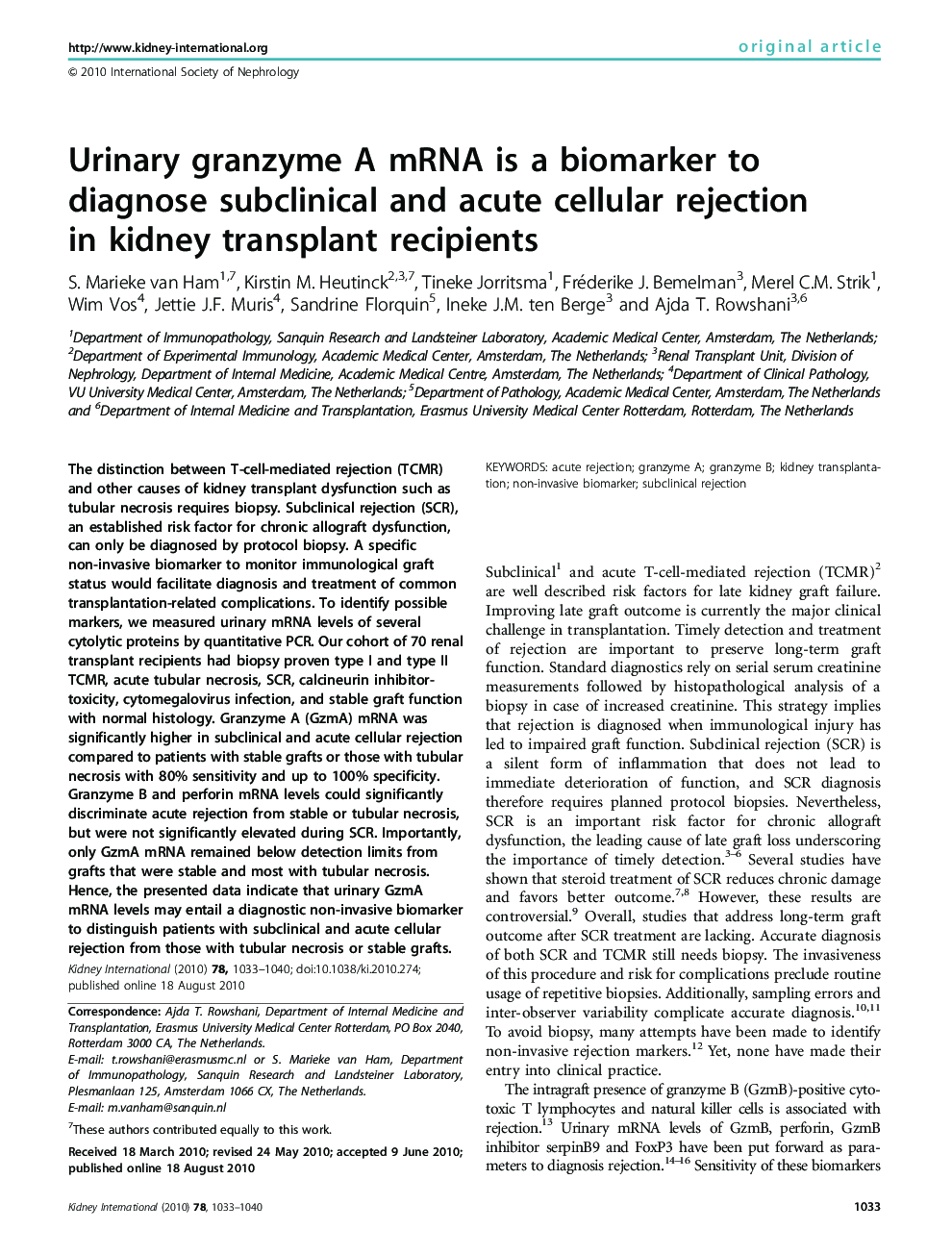| Article ID | Journal | Published Year | Pages | File Type |
|---|---|---|---|---|
| 3884553 | Kidney International | 2010 | 8 Pages |
The distinction between T-cell-mediated rejection (TCMR) and other causes of kidney transplant dysfunction such as tubular necrosis requires biopsy. Subclinical rejection (SCR), an established risk factor for chronic allograft dysfunction, can only be diagnosed by protocol biopsy. A specific non-invasive biomarker to monitor immunological graft status would facilitate diagnosis and treatment of common transplantation-related complications. To identify possible markers, we measured urinary mRNA levels of several cytolytic proteins by quantitative PCR. Our cohort of 70 renal transplant recipients had biopsy proven type I and type II TCMR, acute tubular necrosis, SCR, calcineurin inhibitor-toxicity, cytomegalovirus infection, and stable graft function with normal histology. Granzyme A (GzmA) mRNA was significantly higher in subclinical and acute cellular rejection compared to patients with stable grafts or those with tubular necrosis with 80% sensitivity and up to 100% specificity. Granzyme B and perforin mRNA levels could significantly discriminate acute rejection from stable or tubular necrosis, but were not significantly elevated during SCR. Importantly, only GzmA mRNA remained below detection limits from grafts that were stable and most with tubular necrosis. Hence, the presented data indicate that urinary GzmA mRNA levels may entail a diagnostic non-invasive biomarker to distinguish patients with subclinical and acute cellular rejection from those with tubular necrosis or stable grafts.
